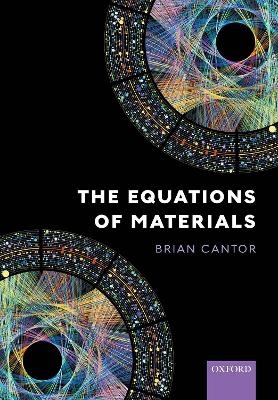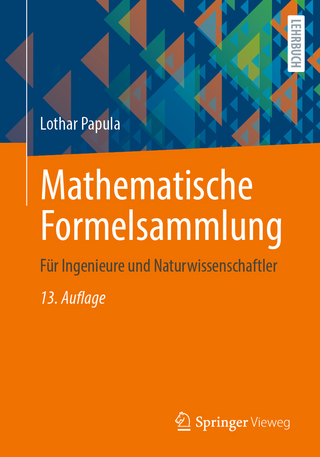
The Equations of Materials
Oxford University Press (Verlag)
978-0-19-885188-2 (ISBN)
This primer describes important equations of materials and the scientists who derived them. It provides an excellent introduction to the subject by making the material accessible and enjoyable. The book is dedicated to a number of propositions:
1. The most important equations are often simple and easily explained;
2. The most important equations are often experimental, confirmed time and again;
3. The most important equations have been derived by remarkable scientists who lived interesting lives.
Each chapter covers a single equation and materials subject, and is structured in three sections: first, a description of the equation itself; second, a short biography of the scientist after whom it is named; and third, a discussion of some of the ramifications and applications of the equation. The biographical sections intertwine the personal and professional life of the scientist with contemporary political and scientific developments.
Topics included are: Bravais lattices and crystals; Bragg's law and diffraction; the Gibbs phase rule and phases; Boltzmann's equation and thermodynamics; the Arrhenius equation and reactions; the Gibbs-Thomson equation and surfaces; Fick's laws and diffusion; the Scheil equation and solidification; the Avrami equation and phase transformations; Hooke's law and elasticity; the Burgers vector and plasticity; Griffith's equation and fracture; and the Fermi level and electrical properties.
The book is written for students interested in the manufacture, structure, properties and engineering application of materials such as metals, polymers, ceramics, semiconductors and composites. It requires only a working knowledge of school maths, mainly algebra and simple calculus.
Brian Cantor has worked as a materials scientist for over 40 years. He has been Vice Chancellor of the Universities of Bradford and York, Head of Mathematical and Physical Sciences and Cookson Professor of Materials at the University of Oxford, Vice President of the Royal Academy of Engineering, a research scientist at General Electric, a visiting professor at Washington State and IISc Bangalore, and a consultant at Alcan, NASA and Rolls-Royce. He is a Trustee of the Science Museums Group and Chair of the World Technology Universities Network. He was awarded a CBE for services to higher education in 2013.
1: Bravais Lattices: Crystals
2: Bragg's Law: Diffraction
3: The Gibbs phase rule
4: The Boltzmann equation: Thermodynamics
5: The Arrhenius equation: Reactions
6: The Gibbs-Thomson Equation: Surfaces
7: Fick's Laws: Diffusion
8: The Scheil Equation: Solidification
9: The Avrami Equation: Phase Transformations
10: Hooke's Law: Elasticity
11: The Burgers Vector: Plasticity
12: Griffith's Equation: Fracture
13: The Fermi Level: Electrical Properties
| Erscheinungsdatum | 16.09.2020 |
|---|---|
| Zusatzinfo | 113 color line figures and 15 grayscale halftones |
| Verlagsort | Oxford |
| Sprache | englisch |
| Maße | 170 x 247 mm |
| Gewicht | 632 g |
| Themenwelt | Mathematik / Informatik ► Mathematik ► Angewandte Mathematik |
| Naturwissenschaften ► Chemie ► Physikalische Chemie | |
| Naturwissenschaften ► Physik / Astronomie ► Festkörperphysik | |
| Naturwissenschaften ► Physik / Astronomie ► Thermodynamik | |
| ISBN-10 | 0-19-885188-X / 019885188X |
| ISBN-13 | 978-0-19-885188-2 / 9780198851882 |
| Zustand | Neuware |
| Informationen gemäß Produktsicherheitsverordnung (GPSR) | |
| Haben Sie eine Frage zum Produkt? |
aus dem Bereich


